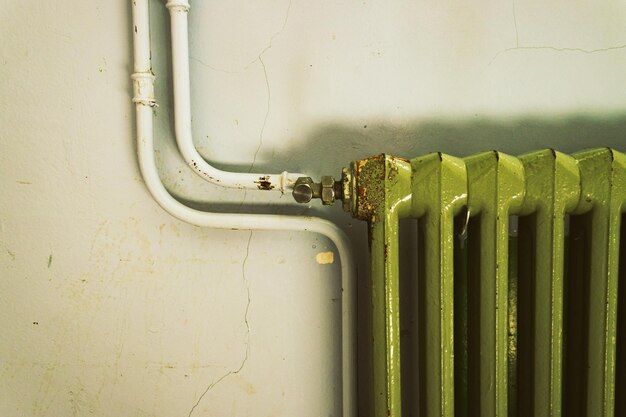Cast iron radiators have been heating homes for over a century. They are known for providing even and consistent heat. However, their utilitarian appearance has led some homeowners to wonder if they should cover or conceal their radiators in some way. Here we will examine the pros and cons of covering cast iron radiators to help you decide what is best for your home.
Page Contents
What are cast iron radiators?
Cast iron radiators consist of sections of hollow iron piping linked together in panels. They are mounted on walls near external walls and windows, where heat loss is greatest. The iron absorbs heat from hot water circulating through the pipes and radiates the heat into the room through conduction and convection.
Compared to more modern heating systems like forced air, cast iron radiators have a number of advantages:
- They provide uniform heat distribution in rooms.
- They continue radiating heat even after the boiler shuts off.
- They don’t dry out air like forced air heating.
- They don’t collect dust and allergens like forced air ducts.
- They are durable and long lasting.
The main drawback is that they are big and bulky. Covering or concealing cast iron radiators may seem like an easy way to make them blend in better with room decor. But there are some important factors to consider first.
Should you cover cast iron radiators?
There are a few reasons why you may want to cover your cast iron radiators:
Appearance
The utilitarian look of bare cast iron radiators clashes with many interior design styles. Covering them can make radiators seem like built-in furniture rather than an intrusion. It creates a neater, cleaner look.
Safety
Exposed cast iron radiators can get very hot. Covering them reduces the risk of burns from accidentally touching hot surfaces. This is especially important in homes with small children.
Noise
Radiators can make pinging and clicking sounds as they heat up and cool down. Covering them muffles these noises for a quieter indoor environment.
Dust
Enclosing radiators limits them from collecting as much dust. This improves air quality.
Here are some reasons you may want to think twice before covering cast iron radiators:
Efficiency
Any type of cover or enclosure will act as insulation and hamper heat transfer from the radiator into the room. This decreases efficiency, forcing your boiler to work harder to maintain comfort.
Condensation
Covering radiators runs the risk of trapping moisture inside the enclosure, leading to rust over time. Proper airflow around radiators prevents this condensation.
Fire hazard
Radiator covers made from certain materials like wood can pose a fire hazard if they overheat. Metal, high-heat plastics, and fireproof insulation are safer options.
Cost
Quality radiator covers or enclosures are expensive, often hundreds of dollars per radiator. The costs add up quickly in a home with multiple units.
Best practices for covering cast iron radiators
If you want to cover your radiators, follow these guidelines to maximize efficiency and safety:
Leave the top uncovered
Covering just the lower half or two-thirds of a radiator enables heat to still rise and circulate. This is less restrictive than enclosing the radiator completely.
Use ventilated covers
Look for covers that have vents or perforations to allow some heat out. Solid wood covers are not recommended.
Allow airflow underneath
Leave a gap of at least 3 inches between the radiator and cover to let air and heat flow. Do not seal radiators tightly against the wall.
Use heat-safe materials
Select covers made of metal, high-temperature plastic, or non-flammable insulation. Wood should be avoided.
Check manufacturer guidelines
Consult your radiator manufacturer’s recommendations before covering units. Improper covering risks voiding warranties.
Inspect regularly
Check enclosed radiators frequently for signs of rust or excess moisture. Discontinue use if you notice issues.
Radiator cover ideas
Here are some popular options for covering cast iron radiators:
Radiator cabinets
Custom built cabinets around radiators allow warm air out the top through vents while creating a furniture look. They can match existing trim or be painted.
Metal grilles
Perforated metal grilles maintain air circulation. They offer minimal coverage but a neater appearance.
Radiator boxes
Boxes made of durable plastic or metal mesh provide maximum protection from hot surfaces with vented sides.
Decorative screens
Ornate folding screens help conceal shape while allowing airflow. They can match room decor.
| Cover Type | Price Range | Efficiency Impact | Fire Risk |
|---|---|---|---|
| Radiator cabinet | $250 – $500 each | Medium | Low |
| Metal grille | $50 – $150 each | Low | Very low |
| Radiator box | $100 – $250 each | Medium | Low |
| Decorative screen | $100 – $300 each | Medium | Medium |
This table compares different radiator cover options on cost, efficiency impact, and fire risk. Radiator boxes and metal grilles provide the best balance of aesthetics, efficiency, and safety.
Conclusion
Covering cast iron radiators can help modernize your home’s look and feel. But improper covers can decrease efficiency and create safety issues. Leaving the tops uncovered, choosing ventilated covers, using heat-safe materials, and allowing adequate airflow are keys to balancing form and function.
If you plan to enclose your radiators, have a professional assess your heating needs and inspect for safety. Covers can also impact convection and humidity. Be prepared to adjust boiler settings after installation.
In many cases, the benefits of radiator covers may not outweigh the added costs and risks. But with careful selection and professional installation, they can be an effective way to conceal unsightly radiators.
